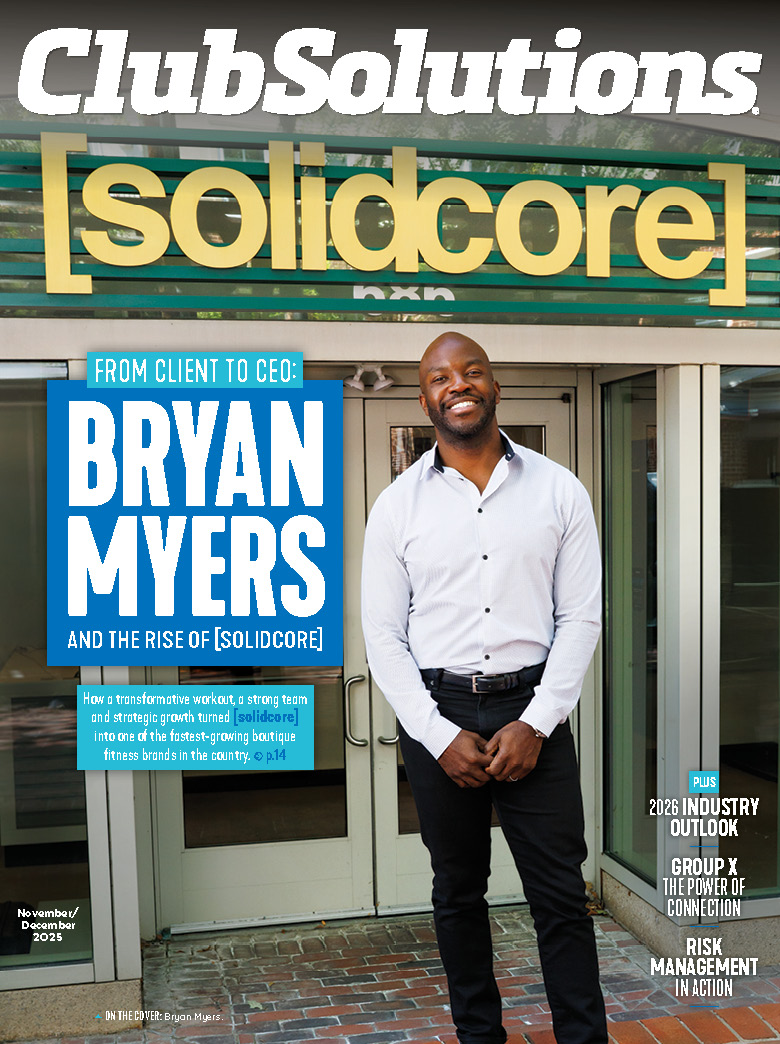Max Goodman is a partner at the law firm SmithAmundsen, LLC, and shares tips on controlled catastrophe and how to profit through risk planning.
Club owners and operators recognize that profitable growth involves increasing revenue while decreasing costs. Fixed costs — rent, taxes, and labor — are predictable and unavoidable. The best owners and operators, however, deliberately employ a system to identify and minimize other, more unpredictable costs that while not guaranteed to occur, are catastrophic if they do. These risks include lawsuits from member injuries, sexual harassment or discrimination claims, loss of key personnel or part of your membership to a competitor (or at-home fitness options), or forced closures due to weather, natural disaster, or yes, a pandemic.
This system of implementing plans to address risk is called Enterprise Risk Management (ERM). ERM involves ranking your business’ most significant risks and assessing costs of mitigating those risks against doing nothing. Is your greatest risk another extended forced closure? Develop a plan now, such as a stronger emphasis on digital content, selling your equipment to cover immediate expenses, implementing small “freeze fees” to limit losses, etc.
A business that properly employs ERM is also more attractive to investors because it helps limit potential downside while instilling confidence. I am aware that “Enterprise Risk Management” sounds like consultant gibberish, but ERM matters because it is about money, specifically, increasing profits by minimizing losses over the long term.
To properly prioritize your clubs’ risks, it can help to learn from competitors’ missteps.
In August of 2020, Washington D.C.’s Attorney General filed a lawsuit against a health club operator, for consumer protection law violations. During the beginning of the COVID-19 pandemic, the clubs had allegedly continued charging members who cancelled memberships, along with other related allegations. This lawsuit combined with decreased revenue related to the pandemic drove this highly-successful brand into bankruptcy just a few months ago. Lawsuits against health clubs are real risks which can appear when you are least able to address them.
Take-aways from Town Sports International:
- Many states have specific laws about gyms’ contract terms. Be compliant. The penalties for failing to get this right are significant, sometimes including awards for attorneys’ fees.
- Keep member contracts short, they represent a simple deal. Long contracts reflect lazy drafters. No legalese — only plain language terms.
- Maintain policies for freezing or cancelling memberships that comply with consumer protection laws and which feel fair. If you need to bury a particular fee in fine print, remove it.
Enterprise risk management is not about extinguishing risk — it is about understanding it. Periodically — ideally once per quarter — write out the visible risks, legal and otherwise, within your organization along with an action plan for each. For which risks are you most unprepared? Lean on your business partners, insurance brokers, attorneys, or anyone you trust to help see the risks you are missing and to develop cost-effective plans to address them. Only by managing knowable risks can you best position your club for growth and resiliency. Whether a pandemic, lawsuits or both at the same time, catastrophe can happen. Develop a proactive plan and be ready for when it does.
Stay ahead in the fitness industry with exclusive updates!
Max Goodman is a partner at the law firm, SmithAmundsen, LLC, in Chicago, Illinois. He can be reached atmgoodman@salawus.comor visithttps://www.salawus.com/attorneys-Max-Goodman.html.










